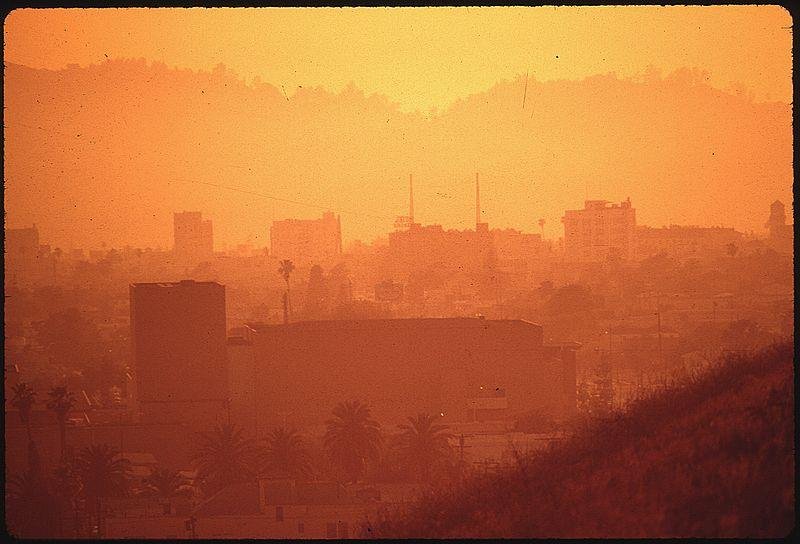1 of 3 | Los Angeles in low-hanging smog, 1972. (Environmental Protection Agency/Greg Daniels)
Scientists with the National Oceanic and Atmospheric Administration have found that "eye-stinging" airborne irritants are on the decline in the Los Angeles area, even as the population of Southern California tripled over 50 years.
"L.A.’s air has lost a lot of its 'sting,'" according to a statement from Ilana Pollack, a scientist from the NOAA's Cooperative Institute for Research in Environmental Sciences (CIRES) at the University of Colorado Boulder.
“Our study shows exactly how that happened, and confirms that California’s policies to control emissions have worked as intended,” Pollack said.
The study examined emissions of chemicals in Los Angeles with new data from research aircraft and roadside monitors along with archived data going back a half-century.
Scientists have been measuring the air pollutants and ozone levels in the South Coast Air Basin, which covers urban Los Angeles, since the 1960s, as lying in a basin makes the region particularly vulnerable.
As a result, California implemented policies and controls to restrict emissions of nitrogen oxides and volatile organic compounds, the "precursors" that result in ozone and other air pollutants.
Peroxyacetyl nitrate (PAN) is the organic nitrate compound responsible for the sting of L.A. smog. Because of emissions reductions, the study says, that compound has decreased.
“The emission reductions have ‘flipped’ some of the chemistry that takes place in the atmosphere,” said Pollack. “The relevant precursors in the atmosphere now favor chemical pathways that are more likely to produce nitric acid, and less likely to make ozone and peroxyacetyl nitrate.”
Although control measures in Southern California have been effective at reducing emissions of precursors, motor vehicles remain the dominant source of emissions in Los Angeles, the second most populous U.S. region.
There are still smoggy days, but both ozone and PAN have declined over 50 years. “To most people the big deal is that things have got a lot better,” Pollack said.
The CIRES study was published online May 21 in the Journal of Geophysical Research-Atmospheres and will appear in a future print issue.















